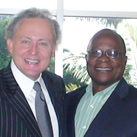The Gateway To The World
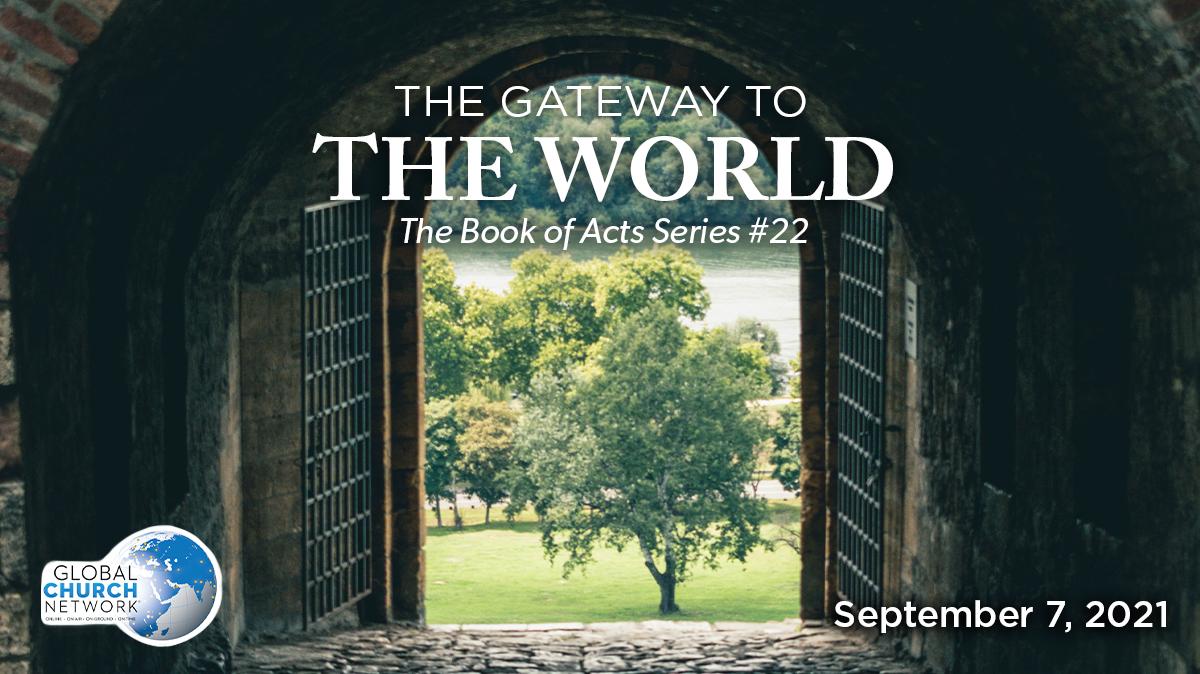
 I am going to give you from God’s Word, three marvelously, wonderful witnesses that will attest that Jesus Christ is the saving Son of God. God does not want us to have to be a question mark with our head bent over an exclamation mark, standing up straight and tall, saying, “Yes, praise God, I am a child of God.”
I am going to give you from God’s Word, three marvelously, wonderful witnesses that will attest that Jesus Christ is the saving Son of God. God does not want us to have to be a question mark with our head bent over an exclamation mark, standing up straight and tall, saying, “Yes, praise God, I am a child of God.”
Our text tells us about Cornelius. He was a Gentile. Up until this time, the Gentiles had not been added to the Church of the Lord Jesus Christ. All those early believers were Jews. Cornelius was a Roman army officer. He’s from Italy—garrisoned there in Palestine. He was hungry to know God. God supernaturally connected this Roman army officer and the Apostle Peter.
God has arranged a divine appointment. Cornelius is standing in front of Peter. He has pulled together all his friends, his neighbors and his relatives. They all come together and sit in front of Peter. Basically, Cornelius says, “We have to come to hear you tell us the truth.”
In Acts 10:38-48, we read:
Peter begins to talk about: “How God anointed Jesus of Nazareth with the Holy Ghost and with power: who went about doing good, and healing all that were oppressed of the devil; for God was with him. And we are witnesses”—underscore that phrase— “we are witnesses of all things which he did both in the land of the Jews, and in Jerusalem; whom they slew and hanged on a tree: Him God raised up the third day, and shewed him openly; Not to all the people, but unto witnesses”—underscore that again— “unto witnesses chosen before God, even to us, who did eat and drink with him after he rose from the dead. And he commanded us to preach unto the people, and to testify that it is he which was ordained of God to be the Judge of quick and dead.”
Now, I’m going to give you these three Pentecostal witnesses.
I. We Have A Personal Witness of the Saints
 In verse 39, Peter says: “And we are witnesses…”
In verse 39, Peter says: “And we are witnesses…”
I want you to imagine a jury, and you’re trying to get on that jury—you’re impaneling the jury. You want the jury to be impartial, but you want the jury to render a good verdict. With this in mind, you are going to get a broad section of the community. You’re going to put that broad sectioning in a jury box, give them the facts and ask them to come to a conclusion. Well, this is what our Lord did when he pulled together the Apostles.
The Apostles had been with our Lord for three or four years. They lived with Him. They walked with Him. They were companions. They ate together. They fellowshipped together.
I want you to think about what kind of a group they were. For example, John was a young man. He was a visionary. He was sort of a philosopher type of fellow. Simon Peter was the opposite of John—the big fisherman, the hard-working fisherman. I imagine that he had pretty salty language before he got saved, because he slipped into it after he got saved. He knew how to curse and swear.
Next, there was Simon the Zealot. The word “zealot” means “right-winger.” He was a political activist, a Zionist. He was for Israel. The opposite of him was Matthew the Publican. Do you know who Matthew the Publican was? Matthew the Publican was a tax collector. Matthew had sold-out to the Roman government. Palestine had been occupied by the Roman government. Can you imagine how you would feel if the Russians took us over, and one of our own became a tax collector for the Russians? They thought of Mathew as a turncoat. Can you imagine having Simon and Matthew on the same jury, trying to ask them to reach a unanimous verdict about anything?
Next, there was Nathaniel. Nathaniel was a cynic. Remember? He was the man who said, “Can any good thing come out of Nazareth?” Then, there was Thomas. He was a doubter. He said, “I’ll not believe unless I see the print of the nails in his hands and in his side.” There was Philip. Philip was a figurer. Jesus said, “How are we going to feed these?” He said. “It will take so much money to feed these five thousand.” He had one of these little calculators in his mind. He was one of these guys who had everything figured out. He was a facts and figures type of leader.
There was also James. James was a businessman. He was a no-nonsense guy. We cannot forget Andrew. Andrew was such a nice guy. He is the guy running around patting little kids on the head and saying, “There’s a little lad here. He’s got five loaves and a few fish, and so forth.”
We could not have gotten a wider mixture than these eleven and they come out with unanimity as witnesses about the Lord Jesus Christ! They witnessed primarily to three things: They witnessed to His virtuous life; His vicarious death and His victorious resurrection.
A. His Virtuous Life (10:38-39)
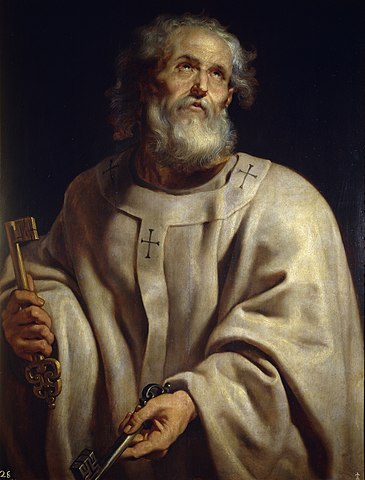 They witnessed: “How God anointed Jesus of Nazareth with the Holy Ghost and with power who went about doing good healing all that were oppressed of the devil; for God was with him. And we are witnesses…”
They witnessed: “How God anointed Jesus of Nazareth with the Holy Ghost and with power who went about doing good healing all that were oppressed of the devil; for God was with him. And we are witnesses…”
No doubt Peter said:
Don’t tell me that He didn’t turn water into wine. I drank some of it. Don’t tell me that He didn’t walk on water. I was out there with him. Don’t tell me that it’s hearsay. Don’t tell me that it’s a fable. Don’t tell me that He didn’t raise that little girl from the dead. I talked with Him after God raised her from the dead through our Lord and Savior Jesus Christ. Don’t tell me that these miracles are not real. I know that they are real, for I was there. I was an eyewitness of His Majesty when He was transfigured. I heard God speak from Heaven, saying, ‘This is My Beloved Son.’ We were with Him for three or four years, and not one flaw did we find in His character. We saw the miracle-working power of God.
B. His Vicarious Death (10:39)
In verse 39: “And we are witnesses of all things which he did both in the land of the Jews, and in Jerusalem; whom they slew and hanged on a tree.”
Peter says:
We were there—standing back in the crowd—but we saw them as they drove those nails into His quivering hands. We heard Him as He cried and sobbed in anguish: ‘My God, my God, why hast thou forsaken me?’ (Matthew 27:46). We were there, when He said, ‘I thirst.’ We were there, when He prayed, ‘Father forgive them.’ We were there, when He said: ‘Father, into thy hands I commend my spirit’ (Luke 23:46). We were there when He gave up the ghost. We were there when they took Him down. We were there when they put Him in the tomb. We saw Him die. He didn’t die for His sins—He died for ours. He became accursed for us. He took our place. We were eyewitnesses.
C. His Victorious Resurrection (10:40-41)
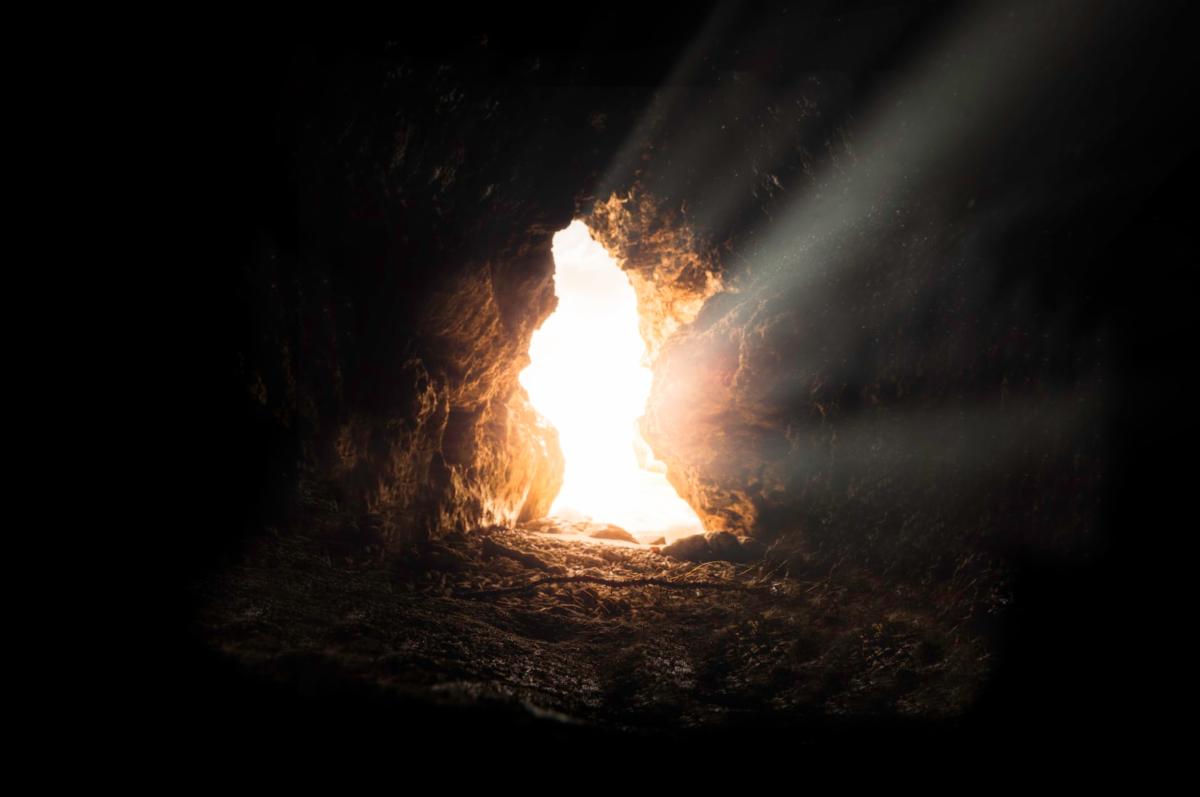 In verses 40 and 41 we read, “Him God raised up the third day, and showed him openly. Not to all the people, but unto witnesses chosen before God, even to us, who did eat and drink with him after he rose from the dead.”
In verses 40 and 41 we read, “Him God raised up the third day, and showed him openly. Not to all the people, but unto witnesses chosen before God, even to us, who did eat and drink with him after he rose from the dead.”
Peter says, “Listen, this is not fable; it is fact. God raised Him—Cornelius—from the dead. How do I know? I saw Him.” “Well, how do you know, Peter, that it wasn’t a hallucination?” “I’ll tell you how I know that it wasn’t a hallucination. We all saw it. You don’t get eleven men to hallucinate at the same time. Cornelius, more than five hundred saw Him at one time.”
Can you imagine a courtroom, when you are trying to attest to the historical facts of something, and you bring five hundred witnesses in, who say, “We all saw the same thing. We all experienced the same thing.”
“Well,” you say, “maybe you saw something, but maybe it was a ghost.” Peter says, “It was not a ghost. We sat down and ate with Him. I mean, we actually touched Him and handled Him. We ate with him.”
A lot of people say, “That’s all a lie. Somebody just recorded it but it is not true.” Do you think that it’s a lie? You’d better go back and read in secular and profane history and find out how these people died—these early Christians. They died for what they believed. These eyewitnesses died. This same Peter was crucified upside down. Some people will live for a lie, but no man will willingly die for a lie. These people died for their faith because, they had learned to laugh at death; because they knew that Jesus Christ had come out of that grave.
The testimony of the saints of all of the ages— is one dramatic truth that Jesus Christ is the Son of God. They said, “We are witnesses,” to Cornelius. “We are telling you what these eyes have seen and what these hearts have experienced.”
II. We Have A Prophetic Witness of Scriptures (Acts 10:43)
 In verse 43, we read, “To him give all the prophets witness, that through his name whosoever believeth in him shall receive remission of sins.”
In verse 43, we read, “To him give all the prophets witness, that through his name whosoever believeth in him shall receive remission of sins.”
This verse gives us the key to the Old Testament. Do you know what the Old Testament is about? It is about Jesus. “To him give all the prophets witness…”
Do you know what the Old Testament is saying? It’s saying, “Jesus saves.” Peter said: “To him give all the prophets witness, that through his name whosoever believeth in him”—(Jesus)—“shall receive remission of sins.”
The Bible is not written, primarily, to give us the history of Israel. It’s not written, primarily, to tell us about ceremonies and rituals. It is written to tell us that Jesus saves.
When you open the Bible Jesus steps out of the pages. In the Garden of Eden, when God slew innocent animals and made a covering of skin for Adam and Eve, it pictured the shed blood of the Lord Jesus Christ. When Cain and Abel had an argument over religion, and Abel slew an innocent lamb for the atonement of his sins, Abel’s lamb spoke of the Lord Jesus. In Genesis 3:15, where God spoke of the seed of the woman who would bruise the serpent’s head, he spoke of the Lord Jesus Christ.
In the book of Genesis, where God says to Abraham, “I’m going to bless all of the world through your descendants—through your seed.” Who is the seed of Abraham? The Lord Jesus Christ. In Genesis 22, when Isaac was offered there on Mount Moriah—that’s a picture of the death, burial, and resurrection of Jesus for those who have eyes to see it.
In Exodus chapter 12, the Passover lamb is Jesus Christ. In Leviticus, all of those offerings were about the Lord Jesus Christ. The Scapegoat was a picture of Jesus. They would take two goats. One goat would be pure; that pictured Jesus dying for our sins. The priest would take another goat and lay his hands on the head of it, confessing the sins of the people on the head of it. Then, someone would take that goat and lead that goat away out into the wilderness, never to return again. Jesus is pictured as carrying our sins away. Christ is the sinner’s scapegoat.
They would take a mourning dove—a turtledove—with its sad mourning song, and kill it, speaking of Christ—the Man of Sorrows. They would take a white pigeon and sacrifice that white pigeon, speaking of Christ the Lord Jesus—the pure, gentle, and sinless Son of God. They would take fine flour for a meal offering. That fine flour for a meal offering pictures Jesus—bruised, beaten, and baked by the fires of Hell for us, for he walked the burning corridors of Hell for us. They anointed that flour with oil, picturing the anointing of the Holy Spirit that was upon the Lord Jesus Christ. They mixed frankincense in, which speaks of the intercessory prayers of the Lord Jesus Christ.
God said, “Build a tabernacle.” This tabernacle was about the Lord Jesus Christ. The acacia wood of that tabernacle speaks of the humanity of Jesus. It was overlaid with gold, which speaks of the deity of Jesus. It had badger skins on the outside, which said that, from the outside, it was not beautiful. “He hath no form, nor comeliness; and when we shall see him, there is no beauty that we should desire him” (Isaiah 53:2). Yet, on the inside, there was fine gold and fine twined linen. Furthermore, there was scarlet, blue and purple in the veil. The veil spoke of the body of our Lord Jesus Christ.
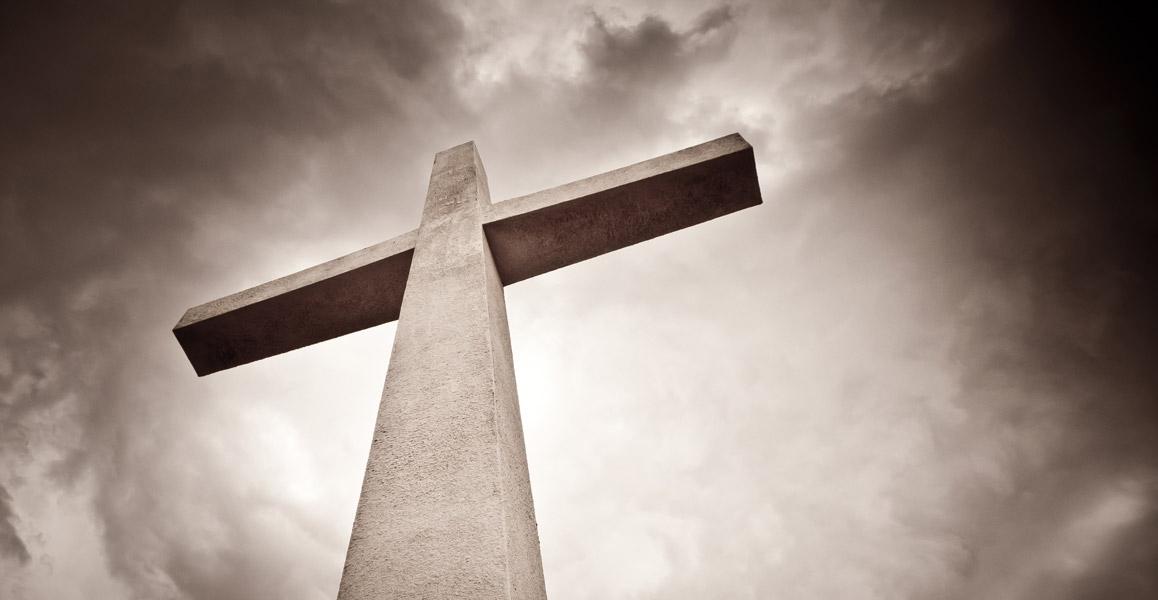 As one came into that tabernacle, there was a brazen altar, which speaks of Christ our Sacrifice, because animals were slain there. Next, the person came to a laver, which speaks of Christ our Sanctification. Next, there is a table with bread on it—the showbread, which speaks of Christ our Sustenance. There was candlestick, which speaks of Christ our Sight. Nearby was an altar of incense, which speaks of Christ our Supplication. Inside are the Holy of Holies and the Mercy Seat, which speak of Christ the Satisfaction for the sinner’s sin, where the blood was sprinkled there. All of this spoke of Jesus Christ. Every priest in the Old Testament pictures the Lord Jesus Christ—our Great High Priest, who intercedes for His people and makes intercession for us.
As one came into that tabernacle, there was a brazen altar, which speaks of Christ our Sacrifice, because animals were slain there. Next, the person came to a laver, which speaks of Christ our Sanctification. Next, there is a table with bread on it—the showbread, which speaks of Christ our Sustenance. There was candlestick, which speaks of Christ our Sight. Nearby was an altar of incense, which speaks of Christ our Supplication. Inside are the Holy of Holies and the Mercy Seat, which speak of Christ the Satisfaction for the sinner’s sin, where the blood was sprinkled there. All of this spoke of Jesus Christ. Every priest in the Old Testament pictures the Lord Jesus Christ—our Great High Priest, who intercedes for His people and makes intercession for us.
If you read the Bible, then you’ll find in Psalm 2 where the Psalmist speaks of the very Son of God and how the kings and the rulers of this world don’t want anything to do with the Son of God.
In Psalm 22, it reads like a person standing at the foot of the cross, though it was written centuries before Jesus Christ was born. In Isaiah 53, the prince of the prophets, Isaiah, who dipped his pen into the golden glory and wrote this powerful chapter about Jesus Christ.
In the book of Micah, we learn where He shall be born in Bethlehem. In the book of Zechariah, we read they will pierce His hands and His feet. We also read in Zechariah, where He’s coming again, and every eye shall see him. In the book of Malachi—the last book in the Old Testament—where he prophesies that John the Baptist shall come.
All of the Old Testament is about Jesus—all of it. “To him give all the prophets witness…” What a testimony! What a testimony to the unity of the Bible. What a testimony to the inspiration of the Bible. What a confirmation of our faith is the Bible.
How would you like to paint a portrait with forty different people, and not one of you seeing whom you were painting and what the others were painting? However, you had to paint him exactly like each other. This what the Old Testament prophets did—many of them not even seeing what the other was painting.
The Bible was written over fifteen hundred years, by forty different authors, in three different languages, and by people from all walks of life. And yet: “To him”—(to Jesus)—“give all the prophets witness…”
We must never entertain the idea that there are several plans of salvation in the Bible. The Old Testament people were not saved one way and people in the New Testament were saved another way. The message of the prophets is that Jesus saves.
When God made coats of skin for Adam and Eve, it was saying that Jesus saves. When Abel slew that lamb, it was saying that Jesus saves. When Isaac was offered on Mount Moriah, the message was Jesus saves. The Passover lamb’s message was that Jesus saves. Ruth’s kinsman redeemer’s message was that Jesus saves. The message of Moses’ serpent, lifted up in the wilderness, is that Jesus saves. All of it—all of the way through—is that Jesus saves.
Jesus said: “Abraham rejoiced to see my day: and he saw it and was glad” (John 8:56). The Bible says that the Gospel was preached unto Abraham. There’s never been but one plan of salvation—it’s faith in the Lord Jesus Christ. People in the Old Testament were saved by looking forward to Jesus. We are saved by looking backward to what Jesus did. Yet, we are all saved by looking upward to the Lord, who lived then, who lives now, and who is the Savior of the world.
III. We Have A Praise Witness of the Spirit (Acts 10:44-48)
 In verse 44: “While Peter yet spoke these words, the Holy Ghost fell on all them which heard the word. And they of the circumcision which believed were astonished, and as many as came with Peter, because that on the Gentiles also was poured out the gift of the Holy Ghost. For they heard them speak with tongues, and magnify God”—the word “magnify” God means to “praise” God. “Then answered Peter, Can any man forbid water, that these should not be baptized, which have received the Holy Ghost as well as we? And he commanded them to be baptized in the name of the Lord. Then prayed they him to tarry certain days.”
In verse 44: “While Peter yet spoke these words, the Holy Ghost fell on all them which heard the word. And they of the circumcision which believed were astonished, and as many as came with Peter, because that on the Gentiles also was poured out the gift of the Holy Ghost. For they heard them speak with tongues, and magnify God”—the word “magnify” God means to “praise” God. “Then answered Peter, Can any man forbid water, that these should not be baptized, which have received the Holy Ghost as well as we? And he commanded them to be baptized in the name of the Lord. Then prayed they him to tarry certain days.”
Peter gave the first witness; the Scripture gives the second witness; and the Holy Spirit gives the third witness. While they were hearing verse 43: “To him give all the prophets witness, that through his name whosoever believes in him shall receive remission of sins.”
In other words, “You are saved, Cornelius, by believing in Jesus. Salvation is by grace. You just believe in the Lord Jesus, and you’ll be saved.” Cornelius’ heart is so hungry. Peter didn’t have to talk Cornelius into anything. He just believed.
Immediately, he received the Holy Spirit and began to speak in tongues. Why did God give Cornelius gift of tongues? I’ll tell you why: God now is enlarging the Church to include the Gentiles. The whole story of Cornelius is that the Gentiles are now being added to the Church, and both Jew and Gentile are becoming one Body.
The first time that we read, “spoke in tongues” was in Acts 2, on the day of Pentecost. That was the Jewish Pentecost. In Acts 10, we have the Gentile Pentecost. God is saying to Peter, “Peter, you know what you received back here, in the book of Acts—in chapter 2? Cornelius has received the same thing that you have. The same God that saved you, Peter, has now saved Cornelius. The same Spirit-baptism, that I have given to you, I am giving now to Cornelius.”
The speaking in tongues was the outward evidence of the internal work of God in the hearts of these people. The amazing, wonderful thing was that God was giving the Holy Spirit to live within the hearts of men.
Back To Blog



